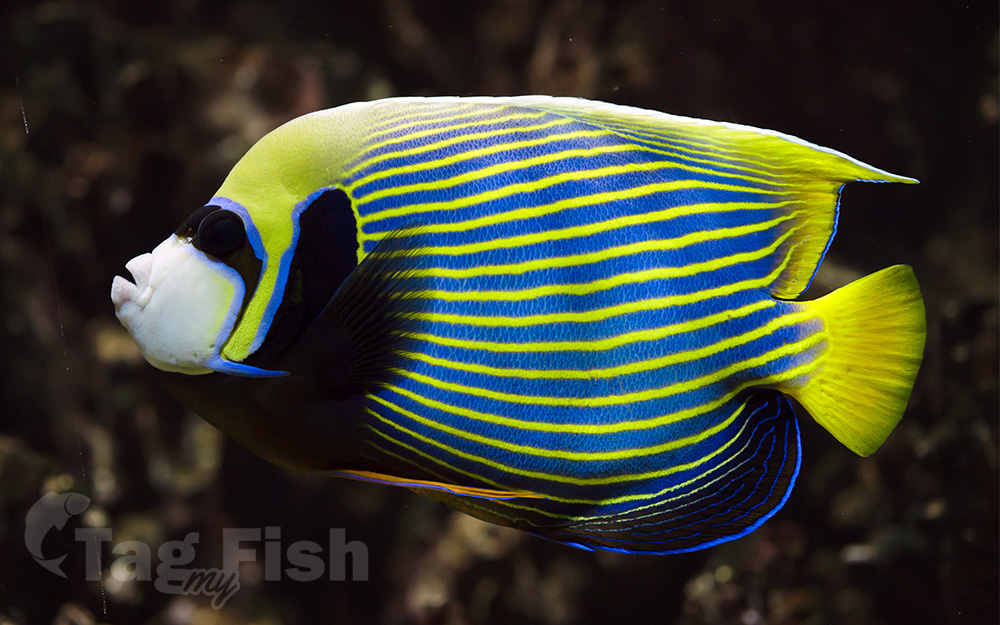Emperor angelfish
(Pomacanthus imperator)

Classification
General data
The emperor angelfish (Pomacanthus imperator) is a species of marine angelfish. It is a reef-associated fish, native to the Indian and Pacific Oceans, from the Red Sea to Hawaii and the Austral Islands. This species is generally associated with stable populations and faces no major threats of extinction. It is a favorite of photographers, artists, and aquarists because of its unique, brilliant pattern of coloration.
The emperor angelfish shows a marked difference between the juveniles and the adults.
The juveniles have a dark blue body which is marked with concentric curving lines, alternating between pale blue and white with the smallest which are completely enclosed within each other located posteriorly. These lines become vertical at the anterior end. The dorsal fin has a white margin and the caudal fin is transparent.
The adults are striped with blue and yellow horizontal stripes, a light blue face with a dark blue mask over the eyes and a yellow caudal fin. There is a blackish band above the pectoral fins, the top of which is at the level of the upper orbit. The front margin of this band is bright blue and the rear margin is a thin yellow line. The anal fin has a dark blue background with lighter blue horizontal stripes.
The dorsal fin has 13–14 spines and 17–21 soft rays while the anal fin has 3 spines and 18–21 soft rays.
This species attains a maximum total length of 40 cm (16 in).
The emperor angelfish has a wide Indo-Pacific distribution. It occurs from the Red Sea southwards along the East African coast to Mozambique and Madagascar, eastwards through the Indian and Pacific Oceans as far as the Tuamotu Islands and the Line Islands. It extends north to the Kansai region and to the southern regions of Japan and south to the Great Barrier Reef of Australia, New Caledonia and the Austral Islands in French Polynesia. Vagrants have been recorded from Hawaii.
It has been recorded at several sites off the coast of Florida and off Puerto Rico, and since 2009 as a recent introduction to the eastern Mediterranean basin where it now found in low numbers in a number of localities.










